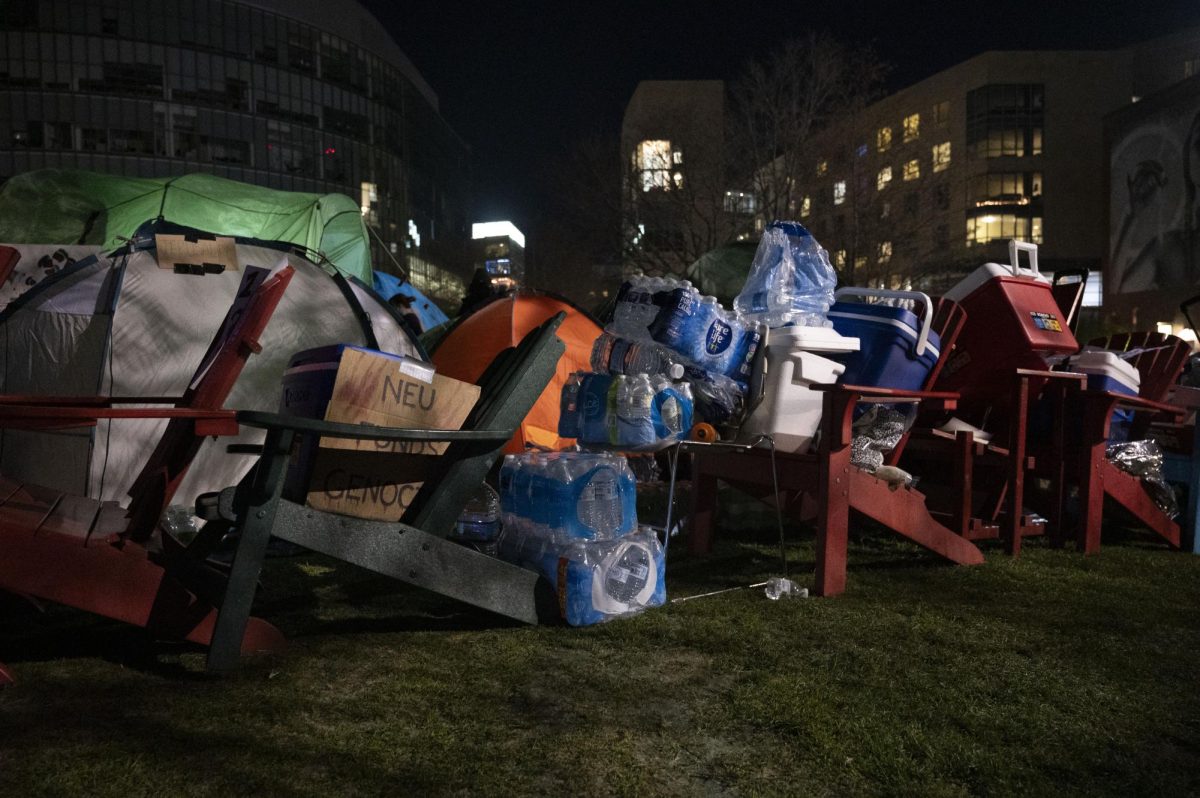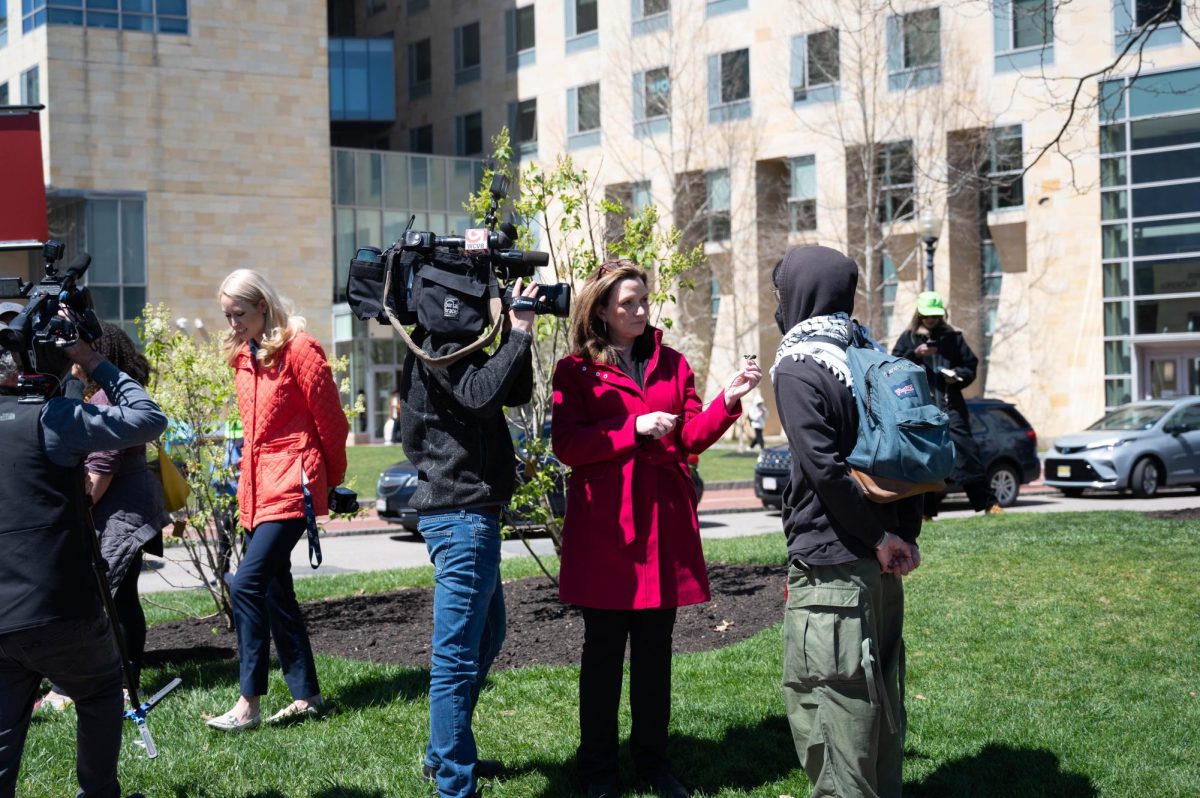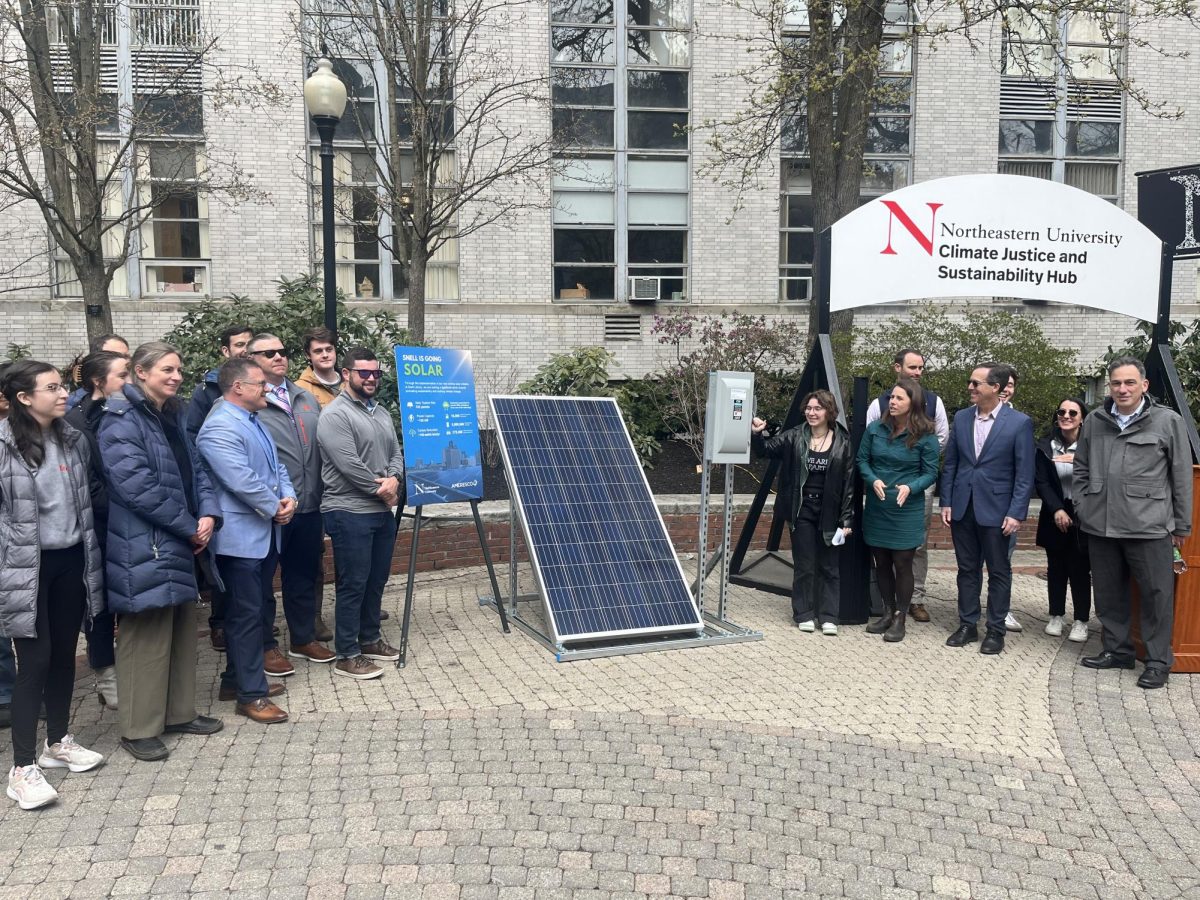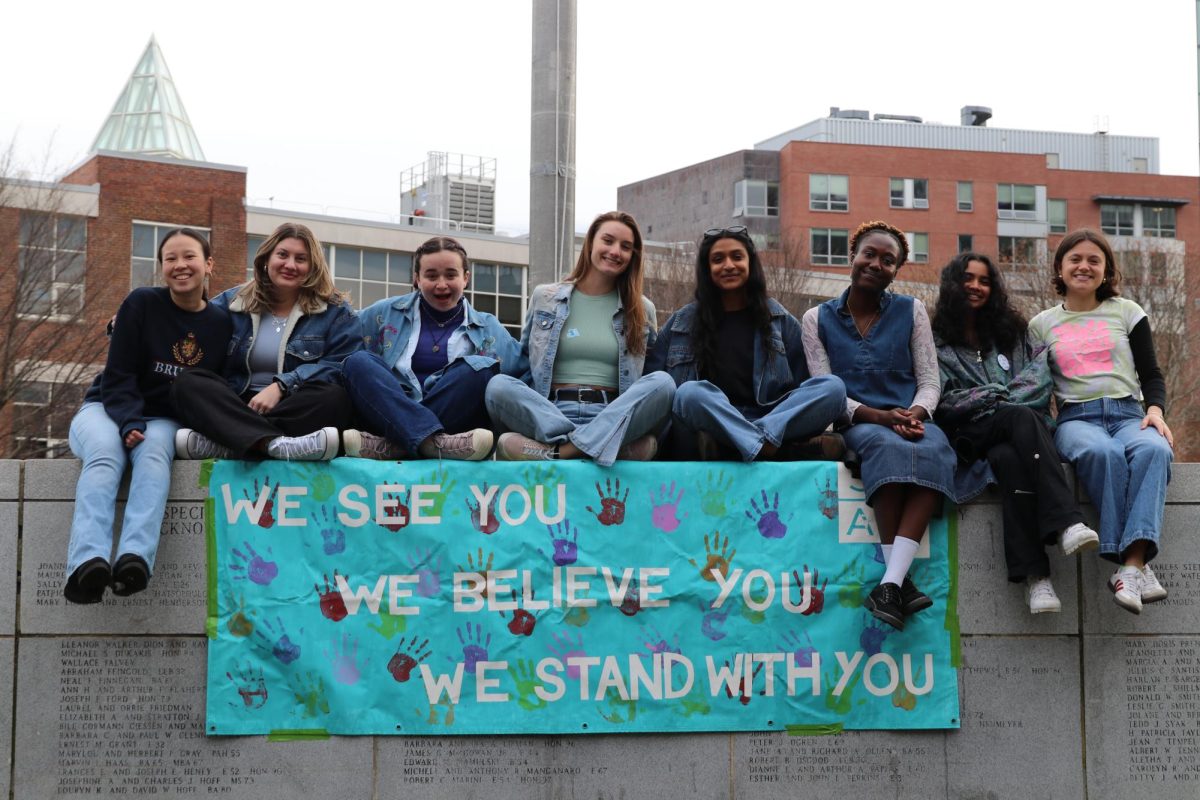By Stephanie Eisemann, News Correspondent
An independent researcher at a community meeting last Thursday outlined her plans for a housing impact study in the neighborhoods around the Northeastern campus.
Pam McKinney, the researcher, described her work before Northeastern administrators and a Community Task Force comprised of residents of neighborhoods around the university, who meet regularly as Northeastern develops its next Institutional Master Plan (IMP). The IMP is a document that will guide the university’s goals and development over roughly the next decade.
“The idea is to submit to the city a master plan for approval. … That master plan will be, unless things change, a 10-year master plan,” Robert Gittens, vice president for public affairs, said. “This will include potential projects that Northeastern could build over a 10-year period.”
The housing study will last between eight and 12 weeks, McKinney said.
“The general objective of the study is to help us all understand what the underlying supply and demand conditions are for the neighborhoods, and at the moment I’m focusing on Mission Hill, on the Fenway, and … Lower Roxbury,” she said.
McKinney said she will analyze neighborhoods separately to account for their obvious differences.
“For each of those neighborhoods we’re interested in trying to understand what the historic pattern of housing [is]… but then to forecast forward … so that we have a feel for how the demand for housing is likely to evolve in the future,” she said.
Over the last several months, the Community Task Force has raised repeated concerns about the impact of students living off-campus in their neighborhoods. Residents have complained about excessive trash and noise, as well as students pushing families out of the residential areas that surround campus.
Gittens said Northeastern is planning to add “[one] thousand beds over the course of the master plan,” to accommodate more students on campus.
But members of the Task Force, which includes residents of Mission Hill, Fenway, Lower Roxbury and the South End, still raised concerns about the number of students who move each year to off-campus housing.
Mission Hill resident Diane Brown said that as Northeastern attracts more students, more people are living off-campus. She said McKinney’s study will be helpful because it will detail the intricacies of the housing market, and, “once we’ve got some of that supply and demand modeled [we’ll be able] to understand what it means to add or subtract student beds from the picture.”
Boston Redevelopment Authority (BRA) Senior Project Manager Gerald Autler said the issue of on-campus housing is about more than just new beds, however.
“You don’t draw students in by simply creating more beds — you draw them in by creating an attractive environment and an affordable environment for them to live, so this is an important topic of discussion,” Autler said.
He alluded to discussions from past Task Force meetings in which the need to offer events and programs that appeal to students was discussed as a necessity in promoting on-campus living.
“I like [the] idea that it may not only be about the physical characteristics of the building but there may be programmatic elements … that really help to make that on-campus housing appealing to students who might otherwise find it more natural to live in the neighborhood,” Autler said.
Aside from housing, the latest meeting also included discussion about a new science and engineering building that will likely be built as part of a new complex in the area around where the Columbus Lot now sits.
After Northeastern submitted its Institutional Master Plan Notification Form at the end of last semester, neighbors and community members were invited to write comment letters on the rough plans for the IMP.
Despite the significant plans for academic development on Columbus Avenue, Kathy Spiegelman, vice president and chief of campus planning and development at Northeastern, said these letters made it clear that housing is of immediate concern.
“It is clear from the comment letters and the … discussions at City Hall that we have got to bring forward the planning for that housing,” she said.
“And so we have begun to think about how we could actually, in that first five years, when we’re planning to do the science project and hopefully some academic projects, that we actually start the first housing project. So between now and before we get approval [on the IMP], we’ll be working with the BRA and we’ll be having discussions about that and what that means.”
The next IMP meeting is tentatively scheduled for April 30.









